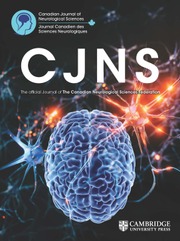No CrossRef data available.
Article contents
P.050 Epilepsy phenotypes in patients with Sotos syndrome
Published online by Cambridge University Press: 05 June 2019
Abstract
Background: Sotos syndrome is a genetic condition caused by NSD1 alterations, characterized by overgrowth, macrocephaly, dysmorphic features, and learning disability. Approximately half of children with Sotos syndrome develop seizures. We investigated the spectrum of seizure phenotypes in these patients. Methods: Patients were recruited from clinics and referral from support groups. Those withclinical or genetic diagnosis of Sotos syndrome and seizures were included. Phenotyping data was collected via structured clinical interview and medical chart review. Results: 25 patients with typical Sotos syndrome features were included. Of 14 tested patients, 64% (n=9) had NSD1 alterations. Most had developmental impairment (80%, n=20) and neuropsychiatric comorbidities (68%, n=17). Seizure onset was variable (2 months to 12 years). Febrile and absence seizures were the most frequent types (64%, n=16). Afebrile generalized tonicclonic (40%, n=10) and atonic (24%, n=6) seizures followed. Most patients (60%, n=15) had multiple seizure types. The majority (72%, n=18) was controlled on a single antiepileptic, or none; 4% (n=1) remained refractory to antiepileptics. Conclusions: The seizure phenotype in Sotos syndrome most commonly involves febrile convulsions or absence seizures. Afebrile tonic-clonic or atonic seizures may also occur. Seizures are typically well-controlled with antiepileptics. The rate of developmental impairment and neuropsychiatric comorbidities is high.
- Type
- Poster Presentations
- Information
- Copyright
- © The Canadian Journal of Neurological Sciences Inc. 2019




